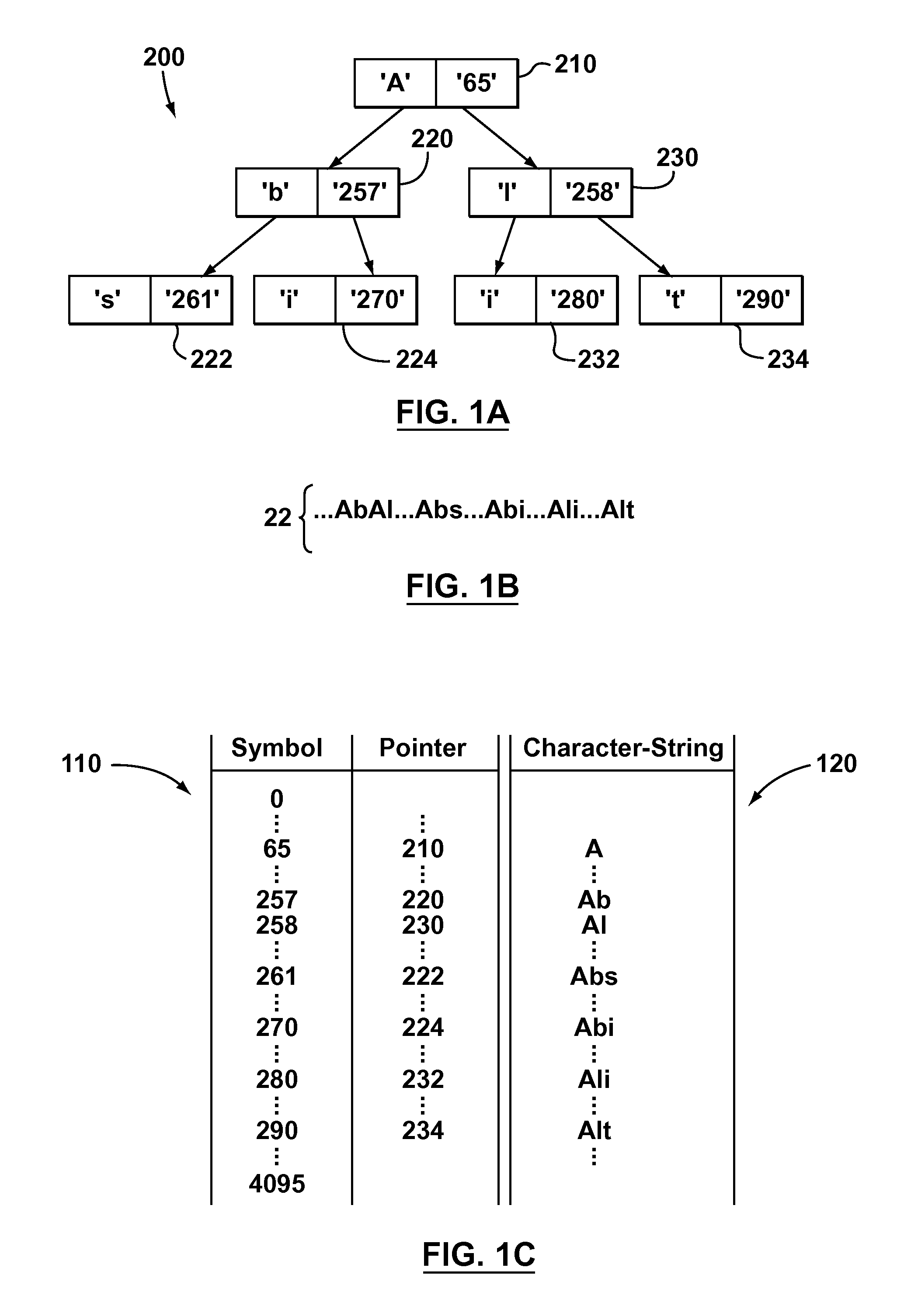Methods of creating a dictionary for data compression
a data compression and dictionary technology, applied in the field of data compression, can solve the problems of loss of some information during compression, high capital and operating costs of database management, and the addition and maintenance of additional blocks of memory, and achieve the effect of low efficiency values
- Summary
- Abstract
- Description
- Claims
- Application Information
AI Technical Summary
Benefits of technology
Problems solved by technology
Method used
Image
Examples
Embodiment Construction
[0039]There are a number of problems associated with known methods of creating a static dictionary for use in data compression. For example, there is a bias towards storing short byte-strings in the static dictionary. The bias is the result of at least two factors. The first factor is that a static dictionary is of a limited size. The second is that previously known methods of selecting byte-strings to be stored in the static dictionary rely on a frequency count metric that is often incremented at a higher rate for short byte-strings as compared to long byte-strings. In turn, in many cases short byte-strings will likely have respective frequency count values that are higher than those for longer byte-strings. As a result, the longest byte-strings that could be used may not be stored for use in the static dictionary given the finite size of the static dictionary and the expected multitude short and frequently occurring byte-strings in a data set. Yet, during the actual compression pr...
PUM
 Login to View More
Login to View More Abstract
Description
Claims
Application Information
 Login to View More
Login to View More - R&D
- Intellectual Property
- Life Sciences
- Materials
- Tech Scout
- Unparalleled Data Quality
- Higher Quality Content
- 60% Fewer Hallucinations
Browse by: Latest US Patents, China's latest patents, Technical Efficacy Thesaurus, Application Domain, Technology Topic, Popular Technical Reports.
© 2025 PatSnap. All rights reserved.Legal|Privacy policy|Modern Slavery Act Transparency Statement|Sitemap|About US| Contact US: help@patsnap.com



